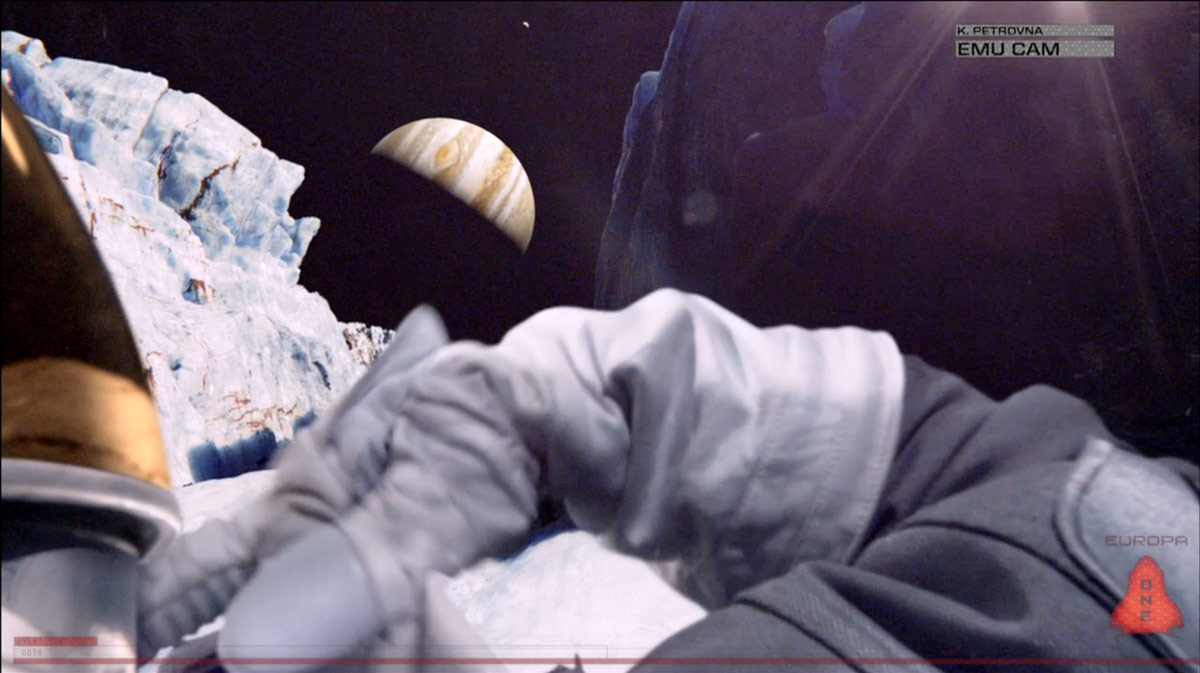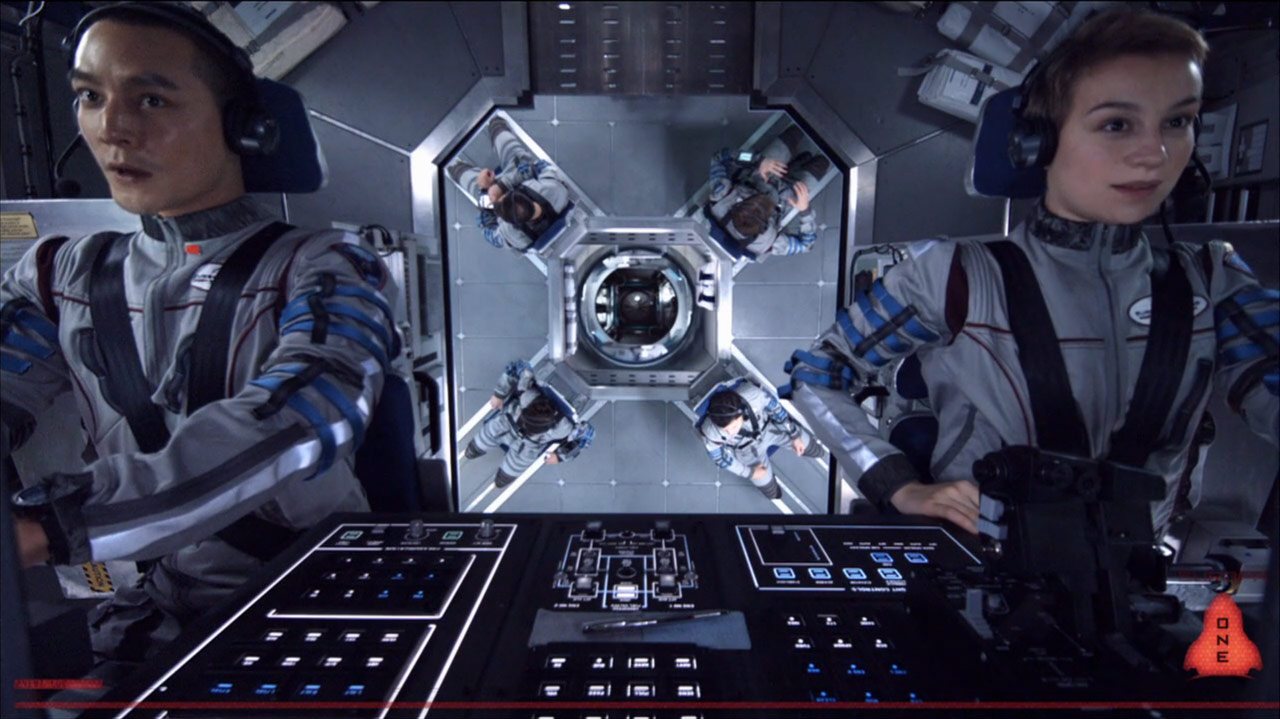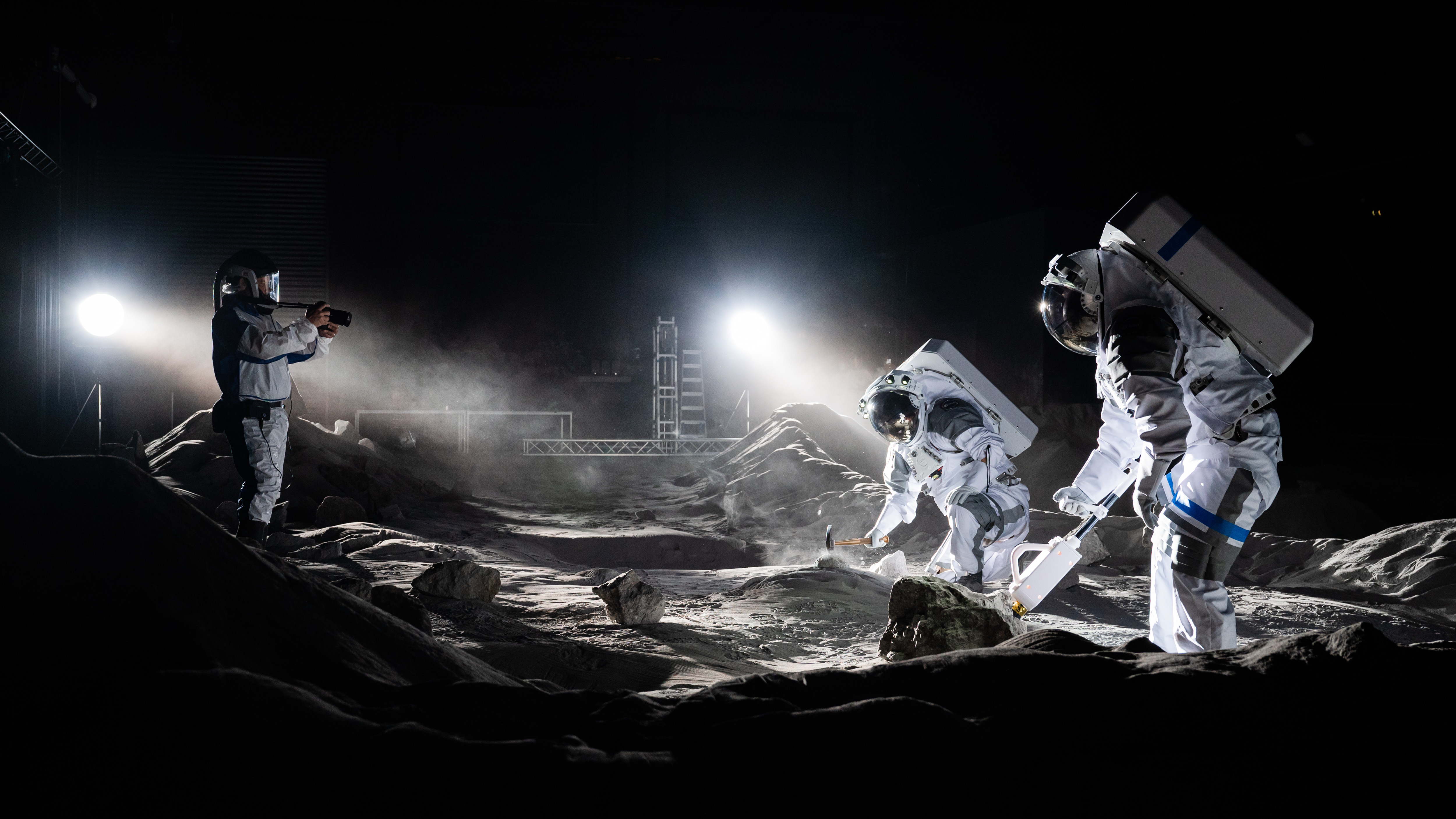Sci-Fi Film 'Europa Report' Uses Science to Show Space Travel Perils

The new science fiction movie "Europa Report" is billed by some admirers as one of the most accurate depictions of human spaceflight ever put on film, and that realism is no accident.
Screenwriters, expert consultants, actors and others worked to bring a sense of reality to "Europa Report," paying meticulous attention to the world they were creating in the spaceship and depicting on the surface of Jupiter's icy moon Europa.

"One of the first things that drew me to the script was the fact that, as I was reading it, everything in there seemed to be at least inspired by what we know both about space travel and the possibility of what could be found on Europa while at the same time keeping a great equilibrium with making a movie that was also thrilling and interesting that kept me gripped until I finished the last page of the script," Sebastián Cordero, the director of "Europa Report," said. [See images and stills from the science fiction film "Europa Report"]
The movie follows the journey of a crew of astronauts sent on the first manned mission to Europa. It is shot documentary-style and features interviews with various people involved in the harrowing undertaking to seek out alien life in the solar system. You can watch the "Europa Report" trailer here.
Scientists working with NASA's Jet Propulsion Laboratory in Pasadena, Calif., consulted with Cordero and other members of the team during the film's production. Steven Vance — the lead for the habitability team of JPL's Icy Worlds Astrobiology group — and Kevin Hand — the deputy chief scientist for solar systems exploration at JPL — both helped to create the realistic world of "Europa Report."
"We would go back and forth on the different issues that they would find … and different things we could incorporate that we could run by them," Cordero said of Hand and Vance's work on the movie. "During the shooting itself, we had a very short shooting schedule and basically once we had settled on the things that the screenplay called for, and once we basically had some sort of blessing from our scientists, we felt that we could go ahead and shoot this. However, during postproduction, there was also a lot of back and forth."

Scientists helped Cordero and the rest of the production team craft a realistic-looking computer- generated surface of Europa when they were putting the final touches on the film.
Get the Space.com Newsletter
Breaking space news, the latest updates on rocket launches, skywatching events and more!
The filmmakers also conferred with other scientists during the movie's production. In order to understand the backgrounds of some of the astronauts written into the script, Cordero and his team worked with other researchers to more fully understand the motivations the characters could have for embarking on such a dangerous journey.
In the original script, the screenwriters had written generic scientists into the movie, but after consulting with an oceanographer, the filmmakers decided to be more specific, including an oceanographer, engineers and other scientists onboard the ship bound for Europa, Cordero said.
The filmmakers also added a few hidden gems for fans of space travel. The rocket launch shown at the beginning of the film was footage from the 2011 launch of NASA's Juno spacecraft, expected to arrive at Jupiter in 2016.
"Europa Report" is currently available in the iTunes store and is set for release in theaters on Aug. 2.
Follow Miriam Kramer on Twitter and Google+. Follow us on Twitter, Facebook and Google+. Original article on SPACE.com.
Join our Space Forums to keep talking space on the latest missions, night sky and more! And if you have a news tip, correction or comment, let us know at: community@space.com.

Miriam Kramer joined Space.com as a Staff Writer in December 2012. Since then, she has floated in weightlessness on a zero-gravity flight, felt the pull of 4-Gs in a trainer aircraft and watched rockets soar into space from Florida and Virginia. She also served as Space.com's lead space entertainment reporter, and enjoys all aspects of space news, astronomy and commercial spaceflight. Miriam has also presented space stories during live interviews with Fox News and other TV and radio outlets. She originally hails from Knoxville, Tennessee where she and her family would take trips to dark spots on the outskirts of town to watch meteor showers every year. She loves to travel and one day hopes to see the northern lights in person. Miriam is currently a space reporter with Axios, writing the Axios Space newsletter. You can follow Miriam on Twitter.
